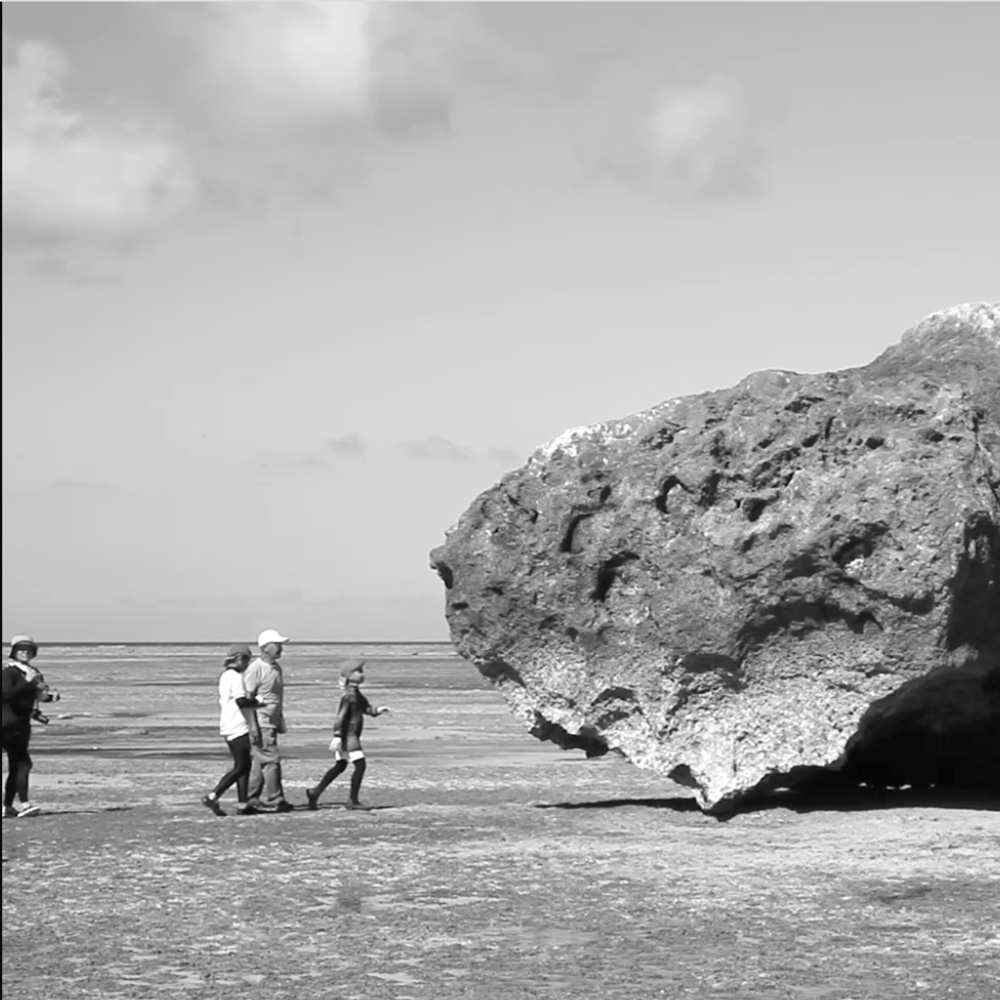–Followed by English translation–
「ある日、無骨で不自然な廃墟」、すなわち、弾痕が無数に残った変電所跡を見つけたことをきっかけに、「トーチカ」「砲台」「掩体壕」などのいわゆる戦争遺構を探す旅に出た下道は、2001年から05年にかけて撮影した写真を、2005年に写真集『戦争のかたち』として出版する。遺跡に出会った当初は、かつてそこで実際に繰り広げられた「戦争」を強く意識したものの、多くの遺構を見るにつれ次第に「戦争で残された遺物が周囲と不自然に浸食しあい出来上がった現実風景へと興味は移っていった」と語る。戦争遺構のあるものは風景の中に溶け込み、あるものは新たな用途に使われ、本来とは別の機能を果たしている例を目の当たりにしたからである。下道の遺構探しの旅は、日本国内に留まらず、過去に日本が領土とし統治した韓国済州島、台湾へと及んだ。
日常の一コマを切り取ったかのようなのどかな風景には、戦争の遺構が写り込んでいるものの、その風景に悲惨な戦渦の跡は見いだせない。過去の忌まわしい記憶を呼び起こす建物は、行政によって例えば花壇や猿山など、楽しく憩える場として生まれ変わらされ、個人によって住居や納屋として活用されている。負の遺物の隠蔽であろうと、そこにあったものの再利用であろうと、発想の転換は、大きな希望と別の道の存在を示唆してくれる。
角奈緒子(広島市現代美術館学芸員)
::::::::::::::
“Remnants”
Inspired by the discovery of some “rough and unnatural ruins,” or more precisely the remains of an electrical-power substation that was riddled with countless bullet holes, Shitamichi Motoyuki set out on a journey in search of war remnants such as bunkers, forts, and shelters. He published his findings, recorded in a series of photographs he took from 2001 to 2005, in a 2005 book titled Bunkers. Although his initial encounters with these ruins led to a strong awareness of the battles that had actually unfolded in these places, as he visited more of the sites, Shitamichi says, “My interest gradually shifted toward the actual landscapes, which were produced by the unnatural erosion that had occurred between the remnants of war and their surroundings.” Some of the ruins he discovered had dissolved into the landscape, and others had been repurposed to function in a manner that was different than the original intention. Shitamichi not only went in search of these relics in Japan but also in areas that had been occupied by Japan, such as Jeju Island in South Korea and Taiwan.
Although he captures the remnants of war in a calm landscape as a single frame cut out of everyday life, there is no sign of the tragic calamity of conflict. The buildings, which call up unspeakable memories of the past, have been transformed into enjoyable and relaxing places such as flower beds and monkey mountains by the government or utilized as residences or sheds by individuals. Whether attempting to conceal the negative nature of the ruins or reuse them, the conversion of the original concept behind them suggests a strong sense of hope and the existence of other options.
Naoko Sumi (curator, Hiroshima City Museum of Contemporary Art)
